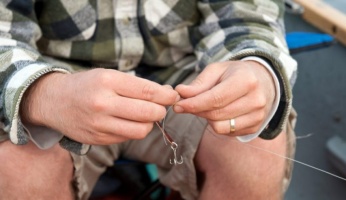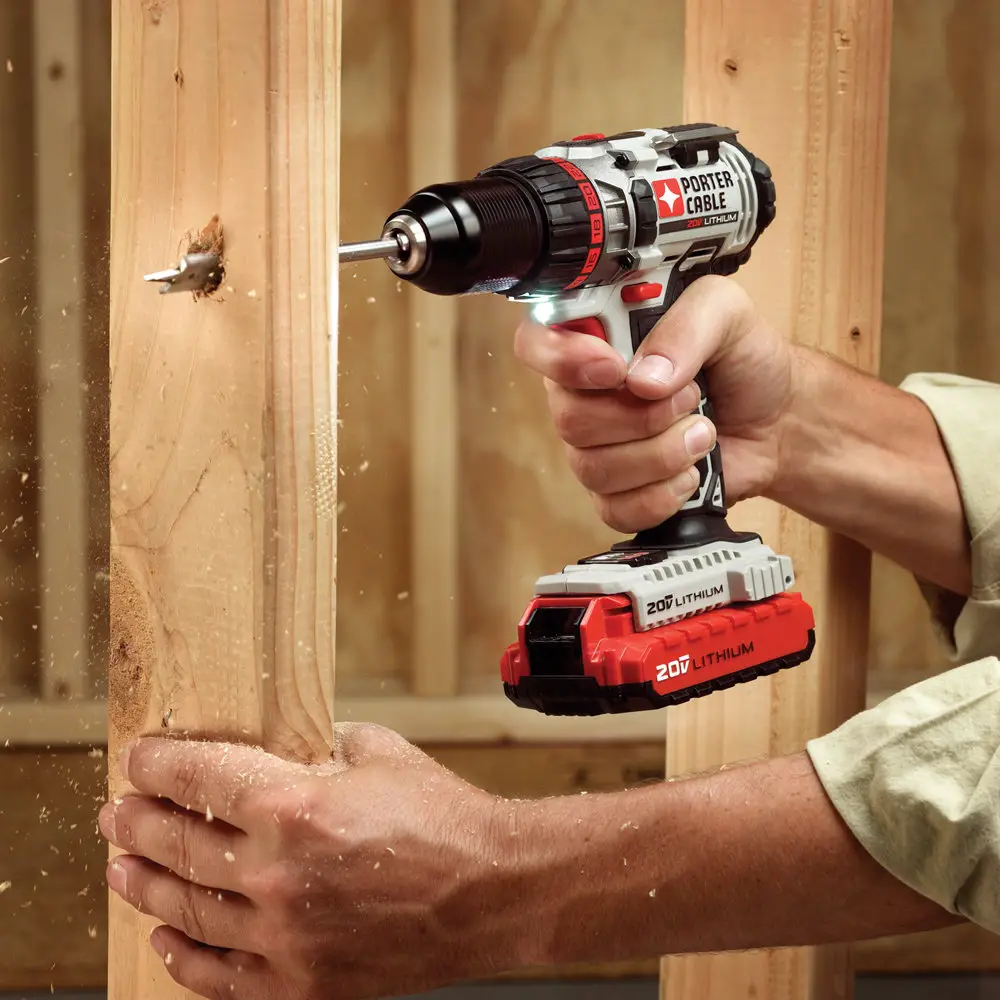How to Sight in a Rifle Scope: The Complete Guide
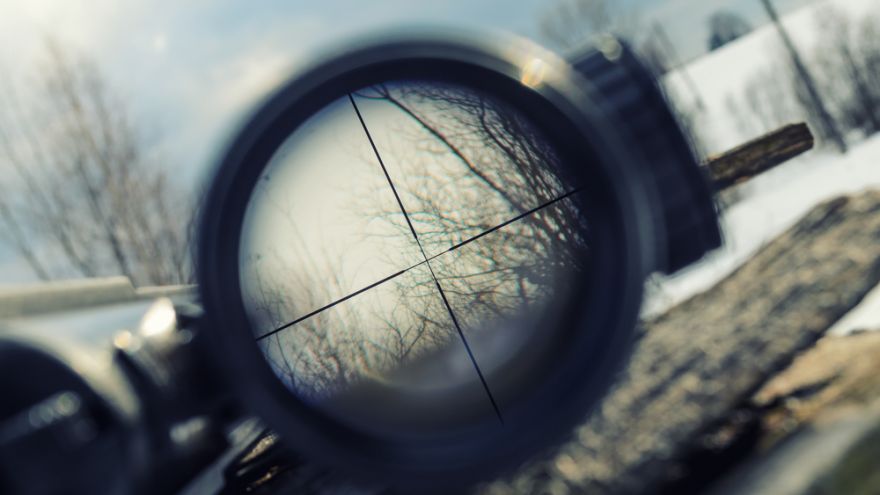 How to Sight in a Rifle Scope: The Complete Guide
thegearhunt.com
How to Sight in a Rifle Scope: The Complete Guide
thegearhunt.com
My rifle scope is not accurate. Can I adjust it myself?
Sighting in a rifle is something that everyone has to learn, especially if you plan to become an avid rifle owner or hunter. The basics of sighting in a rifle can be easy to some and not so easy to others. With everything that comes with sighting in a rifle, it can be an incredibly intricate process and practice makes perfect.
The importance behind sighting in a rifle is going to vary off of what the rifle is going to be used for. There are several different uses for rifles, hunting being the main purpose. When hunting, if you do not have your rifle scope sighted in, there is a great chance that you will not be able to hit your target, therefore, not shooting your prey.
Once you get the basics of sighting in a rifle scope, the rest comes naturally. All the steps that you will learn here, will go for any scope, really. Whether you have a scope on your shotgun, rifle, or handgun, these steps should be relatively close for any firearm.
Before Shooting
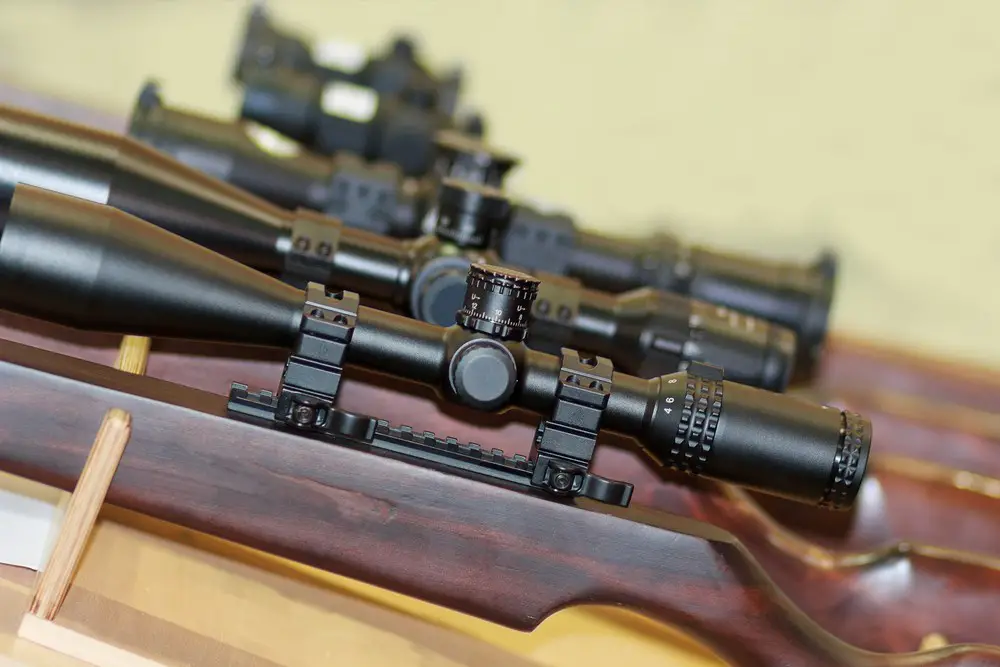
With rifle scopes being one of the most critical or key points of the accuracy of shooting, it is incredibly important to ensure that your rifle mounts are adjusted and tight, to prevent the frustration of inaccurate shooting. There are several factors that can prevent successful scope mounting, with a few main points being stripped, loose or broken screws.
Loose mounts are very common with the fresh purchase of a gun and rifle.This problem has been seen more than once, when trying to sight in a rifle. If your scope was mounted by a gunsmith you can be sure that they have tightened the scope mounts down, but again, always worth it to double check. Loose scope mounts will contribute to inaccurate shooting, making this simple process, a lot more difficult.
Step 1: Checking Scope Mounts
Always make sure you are checking your scope mounts prior to shooting. Loose scope mounts can lead to several issues when it comes to sighting in a rifle. When a scope mount is loose, this can cause the scope to shift, making an inaccurate shot.
- More often than not, there is room for error, but with tightening of scope mounts, there is not. There is no need to crank on these screws as you will run into issues with breaking heads and stripping screws. A torque wrench is ideal when tightening your screws on the scope mounts.
- A torque wrench is recommended for checking your scope mounts.
Recommended
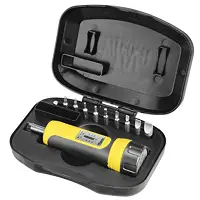
- Weaver accurizing Torque Wrench
-
Our rating - 10"/lbs to 65"/lbs
- Price: See Here

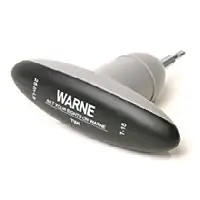
- Warne Mounts Torque Wrench
-
Our rating - 25 Inches/Lb
- Price: See Here

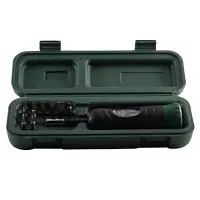
- Weaver Gunsmithing Torque
-
Our rating - Includes variety of bits
- Price: See Here

Step 2: Locate Turrets
By now you have noticed the two scope caps in the middle of the scope. When you unscrew those covers you will notice a turret under each cap. Turrets are raised knobs that are located on the outside of the scope. The turrets are used to make the adjustments to your scopes reticle or crosshairs.
- Before learning the steps to sighting in the scope using the turrets, it is important to know that you should never force the turrets. If the turret is maxed out, it will stop moving. Applying too much pressure or forcing the turrets will cause damage.
Step 3: Scope Adjustments
If your scope is mounted correctly, the top turret will be your up and down adjustment and the right side turret will be your left and right adjustment. Make sure you are looking at the scopes turrets.
- When you look at the turret there will be arrows showing which way to turn the turret to adjust for your next shot. It will be marked on how much adjustment 1 click of the turret equals at 100 yards.
- Almost all scopes adjust in the same manner, however, it is important to make note of adjustment increments. Some are ¼’’ at 100 yards some ½’’.
- Some are measured in MOA and some in inches. For the everyday hunter not shooting much past 200 yards the difference in MOA and inches is nearly unnoticeable and not worth trying to confuse yourself trying to understand. However, the 1 click measurement is a need to know.
Step 4: Check for Level
For the next step, make sure the scope is mounted level with your action. There are tools made to check this, but for the average short range shooter, less than 200 yards, put the rifle on sandbags so you can guarantee a firm mount.
Now, hold the rifle to your shoulder. When you look through the scope, the vertical crosshair should point right to the center of your action. If you have to twist the gun to make that alignment you will need to correct it, before shooting.
- There is such thing as a crosshair leveling scope that will ensure that your scope is mounted level with your action. This will assist in an accurate shot.
- The sandbags are used in shooting to help balance the firearm and assist with staying on target. A steady hand is incredibly important while sighting in a rifle scope.
Recommended
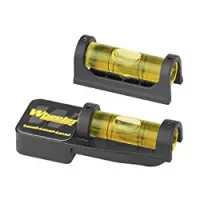
- Wheeler Scope Levelling Tool
-
Our rating - for bolt-action rifle
- Price: See Here

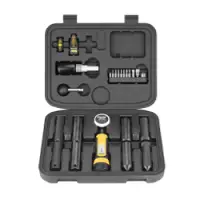
- Wheeler Scope Mounting Kit
-
Our rating - full set
- Price: See Here

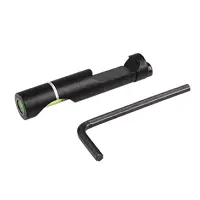
- Mercu Metal Bubble Spirit Level
-
Our rating - Anit-cant
- Price: See Here

Step 5: Getting on Target
We’re now going to focus on getting the gun on target. Some guns say that they are bore sighted and will be on paper at 100 yards, right out of the box. Rarely true! If you don’t have a bore sighter and aren’t comfortable eyeballing it try this.
Put a target up at 25 yards. When it comes to the target, the bigger the better. You don’t want to be chasing your tail right out of the gate. Take a seat, get comfy, remember all the rules of firearm safety, get your eyes and ears on and load up.
- Always double check that your firearm is correct, no matter what the outside of the box says. Never trust that it is 100% accurate, especially if it has never been fired, after the original fire that every gun has to have.
- The idea behind boresight is good, but rarely accurate. Boresight is a process that is done to an optical scope that is supposed to assist with pre-alignment, making a zero drop at such a distance. As previously mentioned, always worth a double check.
Take your shot. Be sure to make it a good one. Take your time. Shoulder to the gun, firmly. Breathe and slowly, ‘’squeeze’’, not pull the trigger. Make your shots count.
Step 6: Check Your Shot
Now, the moment of truth. Unload the weapon, safety on, and see how you did. Now don’t be discouraged. At this point it’s still the guns fault.
Now, remember that number on your turret for 100 yard adjustment. Say it’s 1 click equals ¼ inch. You’re at 25 yards. So a little math and 1 click will equal 1/16th of an inch now.
If you’re low adjust up. Hitting to the right, adjust left. Always adjust the scope in the direction you want the bullet to move. Hitting high, adjust the turret down. To the left adjust the turret right.
By now, you get the idea. This isn’t the time for perfection and wasting expensive ammo. It’s time to get your shots within 3 inches of the bullseye and move your target back.
- Getting used to your turret adjustments can be a little difficult, for a first time shooter. It is always important to remember that one click is equal to a ¼ adjustment.
- It is critical to remember the right and left adjustments. Adjusting the turrets in the wrong direction will result in failed target shooting. Get used to the turrets, take your time and focusing during adjustments.
Final Step:
It is suggested to move back to 50 yards. Same thing back at 50 yards. Get close to the bullseye, not dead on. Now your adjustment will change again. If 1 click is ¼ inch at 100 yards and you’re at 50. You guessed it! 1 click now equals 1/8th inch. Getting close to the bullseye?
- When in the final step, the same steps as above will be repeated, just at a longer distance. It is important to sight in your rifle at the distance that you plan to shoot. If you are hunting for that trophy buck, figure out the distance that you will need to shoot to make your shot. Then sight in your rifle to match that distance. This will ensure a clean, clear shot.
- It is critical to get your sights in at your kill range. This can prevent wounding of animals and inaccurate shots.
Repeat (Optional)
Now, back to 100 yards. Make sure you have a good rest and take smooth shots because it is going to start to show now, more than ever. You are further away from the target now.
Jerking the trigger will move the gun and can make inches in difference. You know what to do but the adjustments are a lot easier now. You now know that 1 click equals ¼ inch. If you hit three inches left, you will need to adjust 12 clicks to the right.
Gather yourself, sit back down, lift your rifle, and get into shooting position. Once the crosshairs are where you need them to be, that that shot. You are now shooting at 100 yards.
The Truth About Scopes
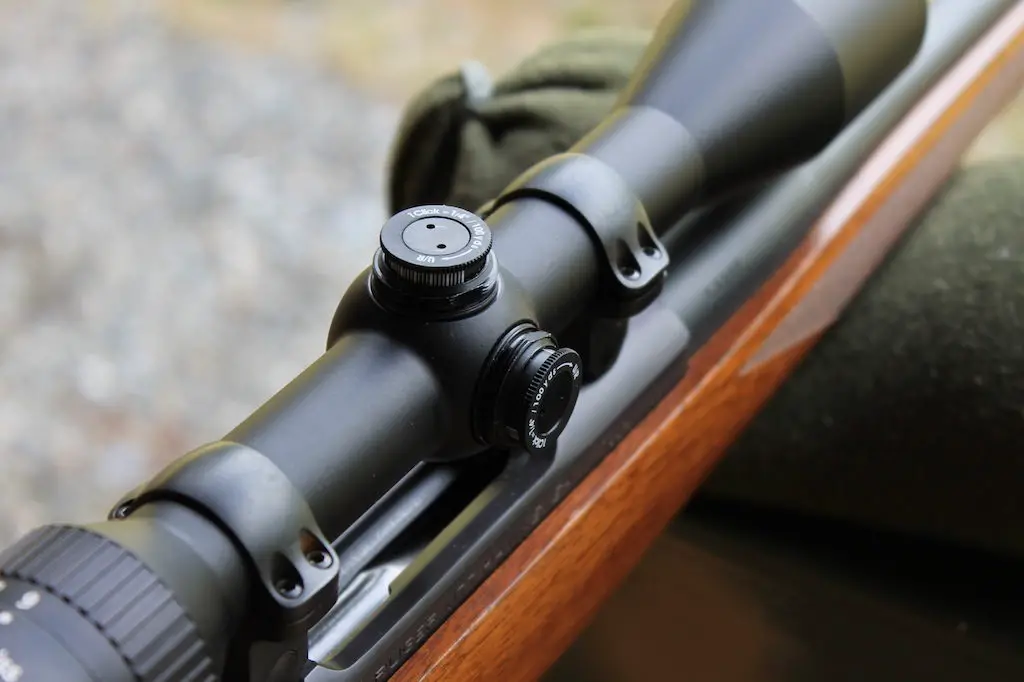
Not all scopes are created equal or the same. Just because the scope says 1 click equals ¼ inch at 100 yards doesn’t mean that’s 100 percent true. Add human error and the elements to the equation and it’s a rough estimate.
Keep in Mind
A couple more things to keep in mind are ammo, barrel temperature, and barrel fouling. Every box of ammo is different so they rarely ever hit the same place. Even if it is the same type of ammo from the same manufacturer.
Bullets are made in batches and every batch is a little different. Some people reload their own shells so they do not have the inconsistencies of different ammo.
Keep It Cool
Getting your barrel to hot and dirty will affect accuracy. It is a good practice to get your gun sighted in, and then clean it. Allow the barrel to cool as much as reasonably possible, then fire your shot.
You’ll notice a difference but not a big one. Before you make any rash decisions, make sure to fire a second shot. If it is consistent with your first clean bore shot, then tweak it if need be.
Key Points to Remember
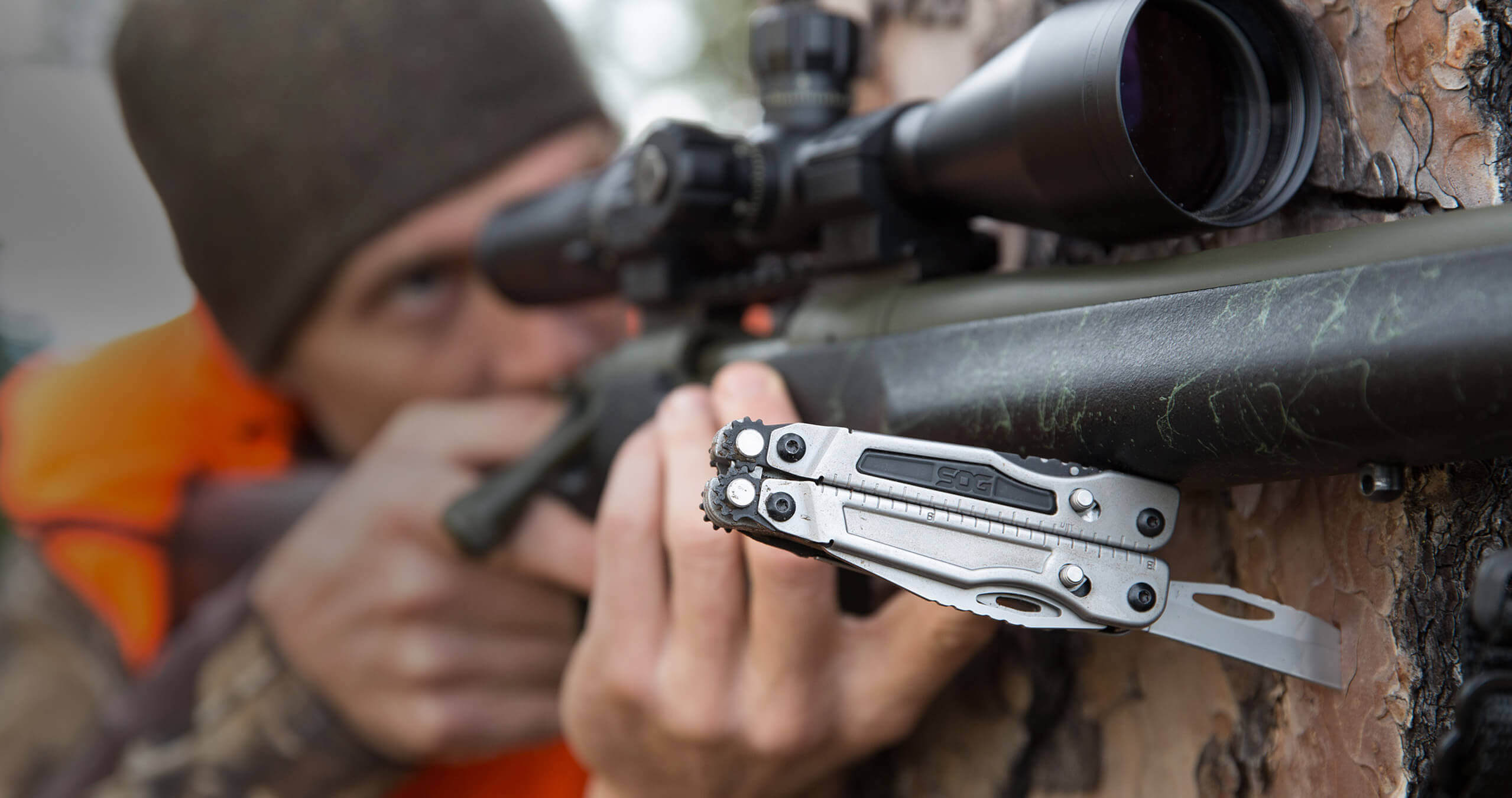
- Always remember to check your scope mounts, make sure they are tight, but not too tight where you can strip or break screws. This will immediately result in inaccurate shooting.
- Make sure that you always level your scope. An unlevel scope results in shooting off of paper.
- Get on the paper. Shooting off of the target can be incredibly frustrating. If the shot is off of the paper, it is hard to decide which way the bullet went.
- Use the same ammo when sighting in. If you decide to use different ammo while sighting in, chances are you will have an inaccurate shot, every time. Each batch is different.
So now that you are successful shooting a perfect pattern on your target, you can be sure that you will make a clean and ethical kill, everytime. Whether it is a big trophy buck that you are after or you are just shooting for fun, it is important to make sure that your scope is dialed in. A scope that is not an accurate shot could lead to a handful of things.
Missing your target not only wastes ammunition, but it also poses the risk of injuring game, and that is never good and the animal will suffer. Aside from other safety hazards that inaccurate shooting can offer, firearms are very dangerous and it is important to ensure that you can a good shot, for your target.
Need Assistance?
When all else fails, there are other options to ensure that your firearm is sighted in correctly. Try not to let the frustration of sighting in your rifle be the end to your shooting days.
The majority of gun shops, or places where you can purchase firearms, have areas where you can sight in your rifles, or get assistance with them. Big name stores such as Bass Pro Shops or Cabelas offer a series of programs that will sight your rifle in for you and assist you in shooting.
Do not be discouraged by using a store to assist you in this. Remember, safety is key and these stores and programs can assist you in becoming a safe shot, every time.
Shooting Targets
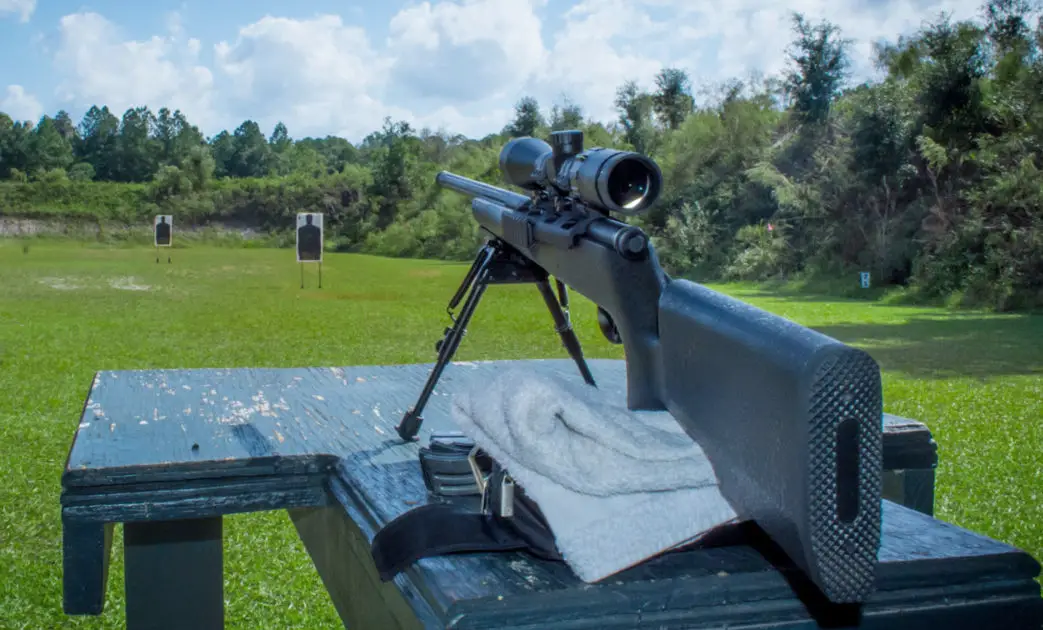
While there is never one right target, it is important to have something to aim for while sighting in your rifles. The reason for this is that way you have something to assist you with accurate shooting.
Always make sure that your target has a bullseye. This will help the accuracy of scope adjustments as you can adjust your turrets to match the crosshairs to the bullseye. This way you will know where your target is and what you need to achieve in shooting, and finally, where your adjustments need to be.
Shooting Bench
A shooting bench is a great accessory to have. Shooting benches will assist in the balance of the firearm and also help with accuracy. When it comes to shooting a rifle, especially in hunting, there is a good chance that you will be sitting or laying down.
Rifle shooting is rarely done standing up. Resting your rifle on something, such as a shooting bench, will help in the accuracy of shooting. Shooting benches can be homemade or purchased at almost any, big name stores. The idea behind these shooting benches is to keep a steady hand while sighting in a rifle. A lot of deer hunters that use deer stands will use shooting benches to rest their guns, to assist in an accurate shot.






